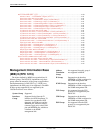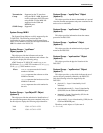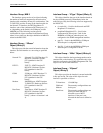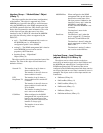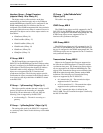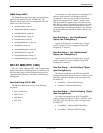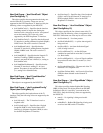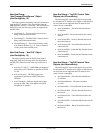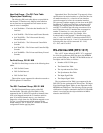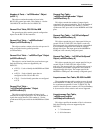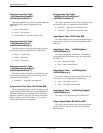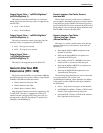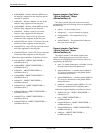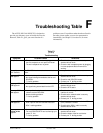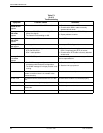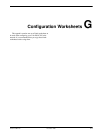
ACCULINK 316x DSU/CSU
E-10 December 1996 3160-A2-GB22-10
Near End Group – The DS1 Total Table
Objects (dsx1TotalEntry)
The following DS1 total table objects are provided for
the Network T1 interface only
. Objects in the table that
are not listed are not supported and will return an error
status if access is attempted.
• dsx1TotalIndex – The index that identifies the T1
interface.
• dsx1TotalESs – The 24-hour total Errored Seconds.
• dsx1Total SESs – The 24-hour total Severely
Errored Seconds.
• dsx1TotalUASs – The 24-hour total Unavailable
Seconds.
• dsx1TotalCSSs – The 24-hour total Controlled Slip
Seconds.
• dsx1TotalBESs – The 24-hour total Bursty Errored
Seconds.
Far End Group, DS1/E1 MIB
The DS1 Far End Group consists of the following three
tables:
• DS1 Far End Current
• DS1 Far End Interval
• DS1 Far End Total
These tables are not supported for either the network or
DTE Drop/Insert T1 interfaces.
The DS1 Fractional Group, DS1/E1 MIB
The DS1 Fractional Group consists of the DS1
fractional table. This table (dsx1FracTable) is fully
supported by the T1 DSU/CSU and allows channel (time
slots) to be mapped between the T1 interface and data
ports. If an invalid channel map (e.g. two interfaces
mapped to a single time slot, one interface mapped to two
T1s, etc.) is received an error will be returned to the
SNMP manager. The T1 DSU/CSU validates all channel
configurations before applying them.
Operational Note: The fractional T1 group only allows
specification of an entire interface to a particular time slot
on another interface (i.e., a time slot on one interface
cannot be mapped to a time slot on another interface).
This prevents complete mapping of time slots on the DTE
Drop/Insert T1 interface to time slots on the network T1
interface. For mapping time slots between the network
and DTE T1 interfaces the following convention will be
used. Time slots on the T1 interface that are mapped to
another T1 interface (i.e., not a data port) will be
connected in ascending order
. For example, if the
fractional table for the network T1 interface maps time
slots 1, 3 and 5 to the DTE T1 interface and the DTE T1
interface maps time slots 10, 1
1 and 15 to the network the
following time slots will be connected: N1 – D10,
N3 – D11, and N5 to D15.
RS-232-like MIB (RFC 1317)
The
“rs232” object defined by RFC 1317 is supported
for all of the synchronous DCE data ports, the MODEM
port, and the COM port. The RS-232-like MIB consists of
one object and five tables, as follows:
• Number of RS-232-like ports
• The General Port Table
• The Asynchronous Port Table
• The Synchronous Port Table
• The Input Signal Table
• The Output Signal Table
The Asynchronous Port T
able is not supported by the
DSU/CSU for the synchronous DCE data ports. The Input
Signal and Output Signal Tables are not supported for the
MODEM and COM ports. The following sections provide
clarification for objects contained in the RS-232-like MIB
when it is not clear how the object definition in MIB is
related to the DSU/CSU.



